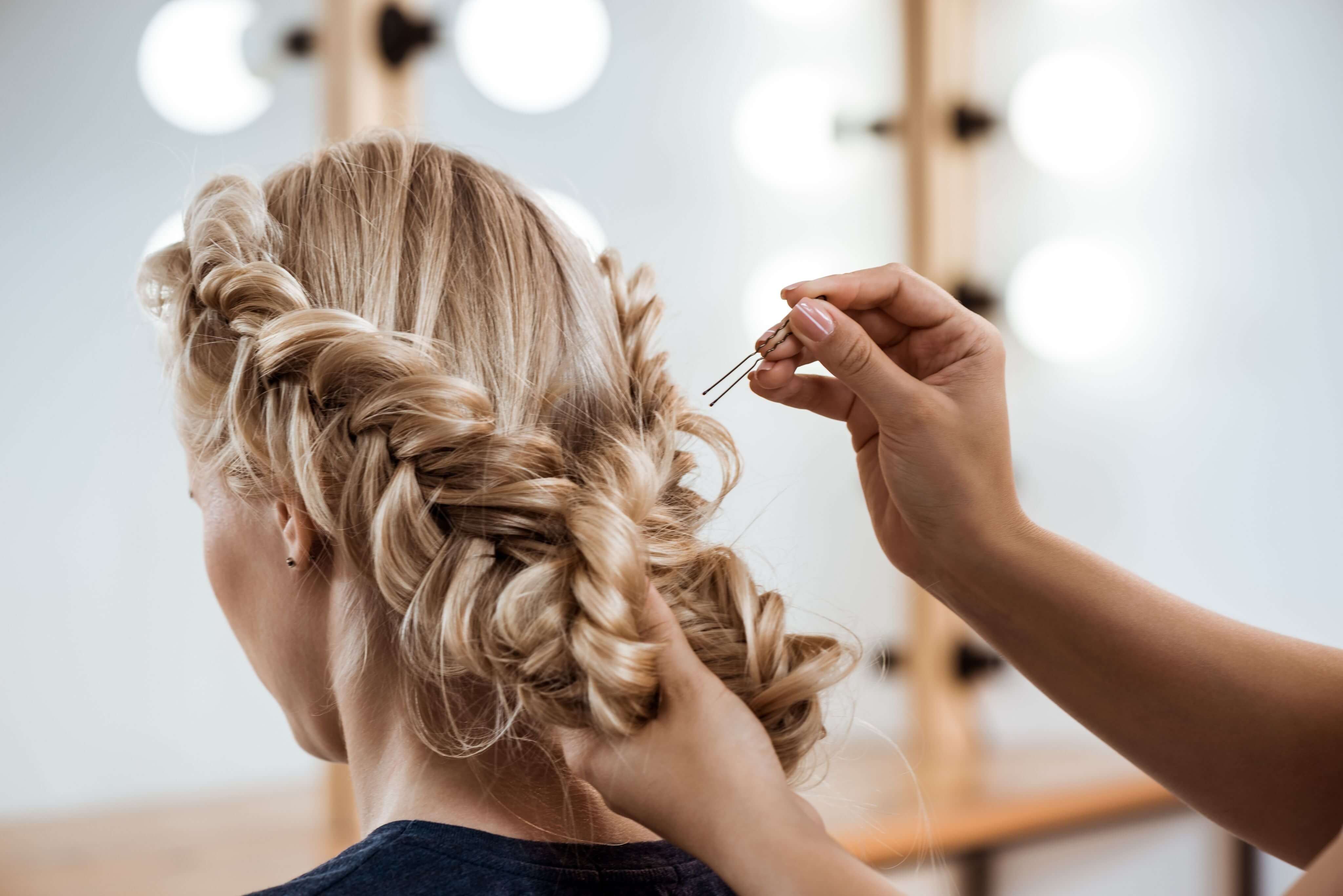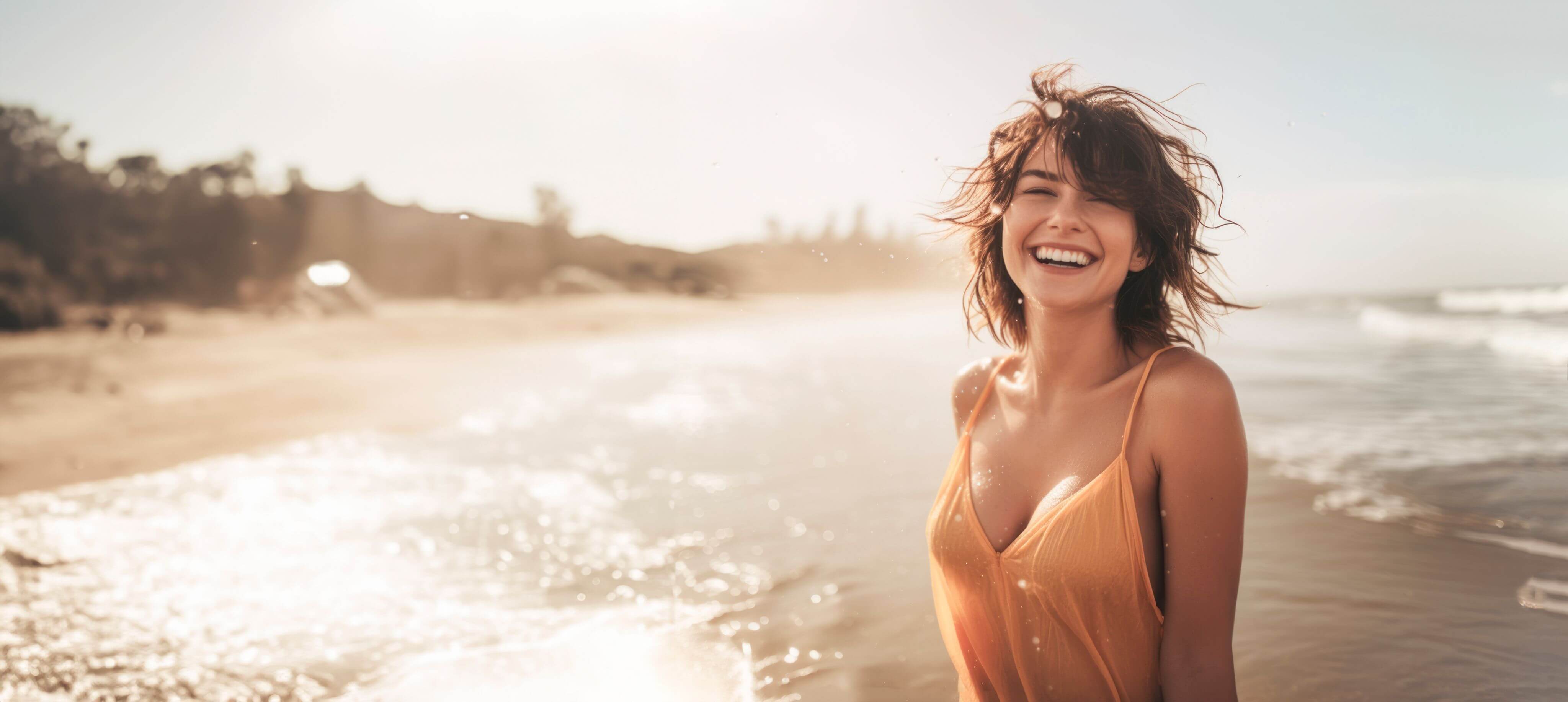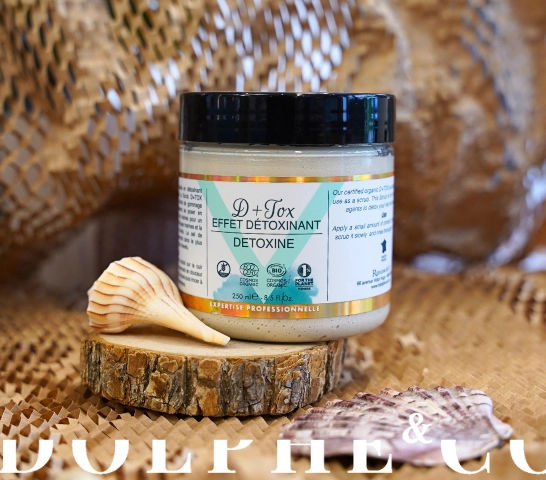
14 December 2021
Hair clarification: why do a hair detox?
Hair clarification: why do a hair detox? Hair clarification, detox, clay mask… You have probably heard these terms many times in the natural hairdressing world. But what does that mean? What is a hair clarification? And how do you do an effective detox? We will explain everything to you. What is a clarification? Like the rest of our body, hair and scalp are subject to many daily aggressions. They are due to environmental pollution, toxins absorbed by the body, or even the many hair products that we apply, especially if they are unnatural and contain silicones... Combined with the nature of our scalp, which can be greasy or even prone to dandruff, the dirt accumulates and ends up suffocating our hair cells. The goal of a hair clarification (or detox) is to eliminate all these impurities and detoxify the scalp, which is the basis for beautiful, healthy and shiny hair. Clarifying products will open the scales of the hair and remove the residues that saturate it to clean it in depth. This will allow the hair to breathe better and be ready to effectively absorb new treatments (natural and organic if possible!) This is why it is important to incorporate hair clarification into your beauty routine. The benefits of a good detox Lightens, purifies and soothes the scalpLightens the hair and makes it more voluminousDeeply cleans and stimulates shineYou'll feel fresh and revitalized afterwards! How to detox your hair naturally? A DIY solution for quick and easy hair clarification is to add a spoonful of baking soda to your regular shampoo. This is a homemade recipe for those who don't necessarily have the time and want to do it quickly and without a fuss. The most popular and effective method for clarifying your hair is still the famous "clay mask". Natural clay, whether green, white, red or yellow, has many health-promoting properties that differ depending on their color. For example, white clay, the most common with green clay, is purifying, detoxifying and regenerating thanks to its richness in silica, and remineralizing thanks to its richness in oligo-elements. It is ideal for all types of scalps, especially the most sensitive ones, as it is considered to be very pure. For a hair clarification by Rodolphe&Co, we suggest using the DTOX Scrub which just had its new packaging, which definitely places it within our Dermo-Specific range. DTOX by Rodolphe&Co is a hair cleansing and detoxifying scrub, particularly rich in marine active ingredients such as mother-of-pearl and kelp from Brittany. The Guérande salt particles will remineralize the scalp and bring the exfoliating side to the scrub. Aloe vera and Damascus rose extracts provide softness and comfort. Kaolin (white clay) is responsible for gently detoxifying and purifying your scalp and hair. Over 98% natural and certified organic by Ecocert and Cosmebio, it is the ideal solution for natural hair clarification! (Find the list of DTOX ingredients here) Good to know: DTOX is ideal for fading colors, especially if you want to transition into natural mineral or plant-based colors. So be careful not to clarify your hair right after a new color! How to make an efficient DTOX? The DTOX by Rodolphe&Co can be used in 3 different ways: as a scrub, as a poultice, or as a shampoo. As a scrubApply a small amount of product in the palm of your wet hand and emulsify. Apply the product to the wet scalp (or the areas to be treated), and lather while exfoliating the scalp. Leave on for 5 minutes, then rinse thoroughly with lukewarm water.This exfoliating treatment is to be done once or twice a week. As a poulticeIn a wooden bowl, mix a teaspoon of product with a drizzle of water. On damp hair, apply the product line by line on the scalp and on 2cm of the lengths. Cover the hair with a shower cap to prevent the product from drying out too quickly and leave on for 10 minutes. For rinsing, start by adding a trickle of water to facilitate the emulsion, then rinse thoroughly with clear water.This poultice treatment is to be done twice a month or when you feel the need (heavy, sticky, greasy hair, etc.). As a shampooSince DTOX has cleansing properties, it can replace your shampoo approximately once a week. After the clarification step, whatever the method, we recommend applying an organic hydrating hair mask to close the hair fiber. It is also possible to complete the routine with an organic (non-greasy) Botanic Oil to nourish the hair if necessary. To go further To complete hair clarification and treat scalp problems in depth, we invite you to discover the range of 100% natural and certified organic Dermo-Specifique serums.

15 November 2021
What is mineral coloring?
What is mineral coloring? New natural coloring technique that is developing on the market, less widespread than plant-based coloring, you may have already heard of it: it is mineral coloring. What is mineral coloring? In the recent years, the abundance of coloring products on the market has led to an increase in allergies and revealed the not always very healthy composition of conventional coloring products. Indeed, if the presence of ammonia (or ethanolamine, its replacement in "ammonia-free" coloring, just as harmful) partly explains the deterioration of the hair, allergies are most of the time due to pigments. synthesis commonly used in oxidation coloring (to understand the difference between oxidation coloring and natural coloring, see this article). The Mineral Colors hair color range by Rodolphe&Co was created in response to these allergic reactions. Exclusive to Rodolphe&Co, it has been formulated with respect for hair and overall health, with mineral pigments (therefore of natural origin), a composition without ammonia or ethanolamine, and therefore which does not penetrate the heart of the hair fiber to alter its nature. Its high concentration of minerals and Mother-of-Pearl from Brittany also help remineralize and energize the hair, restore softness and shine, and care for it. Mineral Colours, a natural and long-lasting hair color How does mineral coloring work? Formulated with natural ingredients, including mainly pigments of mineral origin, plant active ingredients, butters and oils, the mineral color is activated with an eco-activator based on urea peroxide (from white nettle) which will help to hold the pigments on the hair. The mineral hair color coats the first layers of scales of the hair, without penetrating to the heart of the hair fiber. Therefore, it does not alter its nature. 29 shades available, between pure pigments, natural shades or even pearly colors, can be combined endlessly to offer a unique and customizable result for everyone. So, with mineral colors, you can change your natural highlight, drastically darken your color, or just cover your white roots, all with a very natural result! Note, however, that mineral coloring does NOT lighten the hair, due to its absence of ammonia and ethanolamine. On the other hand, it is still possible for you to lighten your hair with a Mineral Balayage, just as natural. In this case, the mineral color is often used as a toner in addition to balayage, in order to obtain the specific highlight desired. What is mineral coloring made of? Mineral coloring is essentially composed of mineral and plant active ingredients. These include: Pure and natural extracts of mother-of-pearl from Brittany for its remineralizing effects (all the benefits of mother-of-pearl in this article)Botanical castor oil, a hair strengthener and repairs and nourishes, known to help hair growthBotanical macadamia oil which will create a protective film, limit aggressions on the hair and preserve the colorMineral extracts such as clays or arginine which strengthens the hair fiber and contributes to hair growthGreen tea extracts for its antioxidant propertiesAs well as pigments from mineral origin What are the benefits of a mineral coloring? Mineral coloring is a coloring solution that is 95% to 97% natural. It is suitable for pregnant women, people undergoing treatment, people who are usually allergic or with a sensitive scalp, or even anyone who simply wishes to protect their body from the chemical contributions of oxidation coloring. It has a faster resting time compared to plant-based coloring (45min-1hr versus 30min-2hrs depending on the desired results), with a wide range of colors possible. It's also a great toner for a mineral balayage! Guaranteed without ammonia, MEA (odorless ammonia), PEG, EDTA, silicone, PPD, PTD, resorcinol, sulfates, paraben, it offers optimal hold on the hair with 100% coverage of white hair. A few examples of mineral coloring Where to do a mineral coloring? Mineral Colours by Rodolphe&Co is a professional color, so it should be done in one of our many partners salons in France and abroad. To find the salon closest to you, check out this link! For more info about mineral coloring, watch this video Teatime with Rodolphe #4!
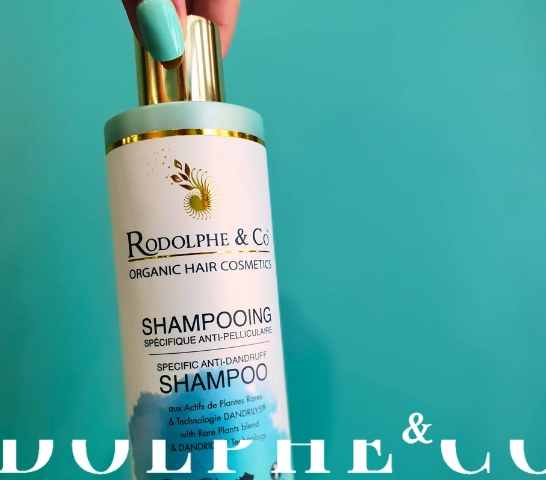
28 October 2021
A natural, organic and patented Anti-Dandruff Shampoo!
A natural, organic and patented Anti-Dandruff Shampoo! If you have a greasy, itchy and irritated scalp, that you tend to have dandruff, you have surely already tried several of the many anti-dandruff products or shampoos available on the market. If you are reading this article, you are surely looking for a natural alternative to all these products. And you are in good luck because we have the solution for you.. Reminder: Why do we have dandruff? Dandruff, or flakes, appear as a result of an imbalance in the life cycle of epidermal cells on the scalp. The skin cells die in an accelerated way, which leads to the appearance of too many flakes of dead skin in the hair. This imbalance can be caused by a hormonal imbalance, stress, an allergic reaction, sunburn, or even the suffocation of the scalp under a product, especially if it contains silicones. For more detail about dandruff, we recommend you watch Teatime with Rodolphe #23. How to get rid of dandruff? In most anti-dandruff shampoos, the main active against dandruff is zinc pyrithione. Powerful antibacterial and antifungal, it has an effective action against malessezia, a fungus naturally present on the scalp, responsible for the appearance of dandruff. Its action is fast, but also short-lived, because as soon as you stop using it, dandruff comes back with a vengeance. These products are therefore certainly effective for the most part, they are also very addictive and contain a lot of synthetic compounds. At Rodolphe&Co, we offer a more natural anti-dandruff solution: the Anti-Dandruff and Soothing Shampoo, with rare plant extracts, patented ECTOIN® and DANDRILYS® to guarantee proven natural effectiveness. To know more about the natural Rodolphe&Co patents, check out this page. What is the Anti-Dandruff shampoo by Rodolphe&Co? The Rodolphe&Co Anti-Dandruff Shampoo is a calming shampoo with active ingredients from rare plants. It gently eliminates dandruff, purifies and cleanses the scalp. Its regulating and toning formula is enriched with ectoin, aloe vera, cistus and witch hazel, known for their anti-dandruff and anti-irritation properties for the scalp. The scalp is softer. Precious extracts of mother-of-pearl, naturally rich in proteins and calcium, are also present. 97% natural, with 62% organic active ingredients, Ecocert and Cosmebio certified, this dandruff shampoo is also made from TWO French and natural patents: ECTOIN® and DANDRILYS®. ECTOIN® is a molecule produced naturally by extremophile microorganisms living in extreme environments such as salt lakes, deserts or permafrost. This molecule binds the water molecules around it to form a moisturizing, nourishing and stabilizing protective shell, thus protecting the scalp from stress and preventing cell damage. DANDRILYS® is a natural active ingredient from the bark of the Ziziphus Joazeiro, a jujube native to Brazil. This natural active ingredient is particularly effective in reducing irritation, soothing the scalp, regulating sebum secretion, stimulating cell renewal, and above all, rapidly eliminating dandruff (with a 72-hour action). It therefore replaces zinc pyrithione, the chemical anti-dandruff molecule. Our test studies have shown that after 2 shampoos, the number of dandruff is lower with DANDRILYS® than with zinc pyrithione, with a difference of 33%. This result lasts after 3 to 4 shampoos, and the hair is less greasy throughout the treatment. How to use the Rodolphe&Co Anti-Dandruff Shampoo? The Anti-Dandruff Shampoo is perfectly suited for regular use, two to three days a week depending on your usual shampooing rhythm. Apply a small amount of product to your hands and emulsify the product on your hair, insisting on the roots and the scalp. Gently massage without rubbing the scalp, which will avoid unnecessarily stimulating the sweat glands and generating more dandruff. Rinse then renew the application a second time and leave on for 5 minutes. Detangle the hair, then apply the Hydrating Hair Mask by Rodolphe&Co to provide care. If you have a dry hair type, you can also complete your routine with the Botanic Oil to apply to the ends. For even more efficiency, you can apply the DTOX scrub by Rodolphe&Co as a supplement before shampooing to detoxify the scalp and facilitate the action of anti-dandruff active ingredients. You can also complete your anti-dandruff treatment with the 100% natural and organic Dermo-Sensitive Serum by Rodolphe&Co. For more info about the Rodolphe&Co Anti-Dandruff Shampoo, watch Teatime with Rodolphe #11.Bonus, this Shampoo won the Silver prize awarded by the Cosmetics Mag Awards in 2020! Find the Anti-Dandruff Shampoo by Rodolphe&Co on our shop right here!
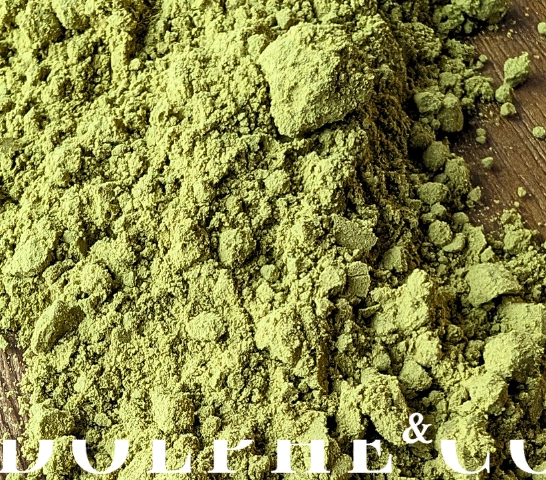
05 October 2021
What plants make up our plant-based hair colors?
What plants make up our plant-based hair colors? As you know if you have read this article on plant-based hair colors, this coloring technique comes exclusively from plants. But what plants? Our Organic Infused Colors plant-based hair colors by Rodolphe&Co and Greenleaf Botanique are both 100% plant-based and certified organic, made from carefully selected tinctorial and Ayurvedic plants to ensure quality care and optimal color. Discover the plants that make up our plant-based hair colors. Cassia – Cassia Auriculata Cassia Auriculata is a bush with bright yellow flowers, resembling small golden yellow butterflies during the summer. In our plant-based colorings, it contributes to:Bring care to the hairStrengthen the hair fiberLimit the secretion of sebumApease and purify the scalp Henna – Lawsonia Inermis Henna, from its Latin name Lawsonia Inermis, is a thorny bush that can reach several meters in height, growing in the tropical and sub-tropical regions of Africa, South Asia and Australasia. Its leaves are mainly used as a dye or tattoo, although tradition also grants them certain medicinal properties. In our plant-based colorings, it contributes to:Give intense copper highlightsMake the hair shineSheath the hair and cleanse the scalp Eucalyptus – Eucalyptus Globulus Very popular with koalas in Australia, Eucalyptus is a plant with bluish foliage that has also recently been found in the Mediterranean region and on our coasts. It has many virtues in pharmacopoeia: balsamic (which calms inflamed mucous membranes), antiseptic, expectorant, febrifuge (which brings down fever), bactericide, tonic, vermifuge... In our plant-based colorings, it contributes to:Act against dandruff and itchingBring shine to the hairStimulate blood circulationNatural remedy against lice Amla – Emblica Officinalis Amla, also nicknamed "Indian gooseberry", is a fruit tree that grows in Nepal, India and Sri Lanka, whose edible fruit is considered a source of vitality. In our plant-based colorings, it contributes to:Stimulate hair growthSlow down hair lossPrevent early white hair Facilitate dark hair coloring Ziziphus Spina – Christi Ziziphus Ziziphus spina-christi is an evergreen tree native to tropical regions of the globe. The oldest Ziziphus spina-christi in the world is located south of Jerusalem, with an estimated age of between 1500 and 2000 years. According to some traditions, this is the tree that gave Christ the crown of thorns. In our plant-based colorings, it helps fixing the color. Aloe Vera – Aloe Barbadensis Aloe vera is a succulent, evergreen plant with shallow roots, growing in clumps and even colonies. Used since antiquity, aloe vera has been adopted in traditional medicines in many hot regions of the world. This plant is now widely cultivated as an ornamental plant, medicinal plant, and is present in many cosmetics. Its pulp is also very rich in proteins and vitamins (vitamins A, B1, B2, B6, C, E, choline), it can be used among other things in yogurts, desserts and drinks. In our plant-based colorings, it contributes to:Bring vitamins and essential oligo-elementsForm a protective film at the surface against wind, salt, sun or particlesApeasing Turmeric – Curcuma Longa Curcuma Longa, or Turmeric, is a perennial rhizomatous herbaceous plant, native to South or Southeast Asia. From its powdered rhizomes is extracted the spice, the main ingredient of curry. It is considered an exceptional plant in terms of its many properties: spice, food preservative, coloring agent, cosmetic and medicinal. In our plant-based colorings, it contributes to:Bring a luminous yellow highlight to light hairsApease sensitive scalpsMake hair more flexible and shinier Indigo – Indigo Tinctorial Indigo comes from the indigo tree, a bush cultivated in the tropical and temperate regions of Asia, America and Africa, which leaves are used for the preparation of indigo dye, very used in particular in the textile industry. In our plant-based colorings, it contributes to:Cover white hair in association with other coloring plantsGive deep blue highlights to dark hairMake the hair soft, flexible and shiny Roselle – Hibiscus Sabdariffa Hibiscus Sabdariffa, or Roselle, is a herbaceous plant native to Africa and Southeast Asia. Roselle is known for its many medicinal virtues: it could, for example, lower blood pressure, facilitate digestion or even reduce dermatoses. In our plant-based colorings, it contributes to:Strengthen the hair and bring shineAccentuate mahogany highlights (by its intense purple coloring power)Stimulate hair growth and fight against hair loss Chamomile – Matricaria Recutita Matricaria Recutita, commonly known as German chamomile or wild chamomile, is a small plant found growing wild along roadsides and in the countryside. Its therapeutic properties have been used since the 16th century, particularly against digestive disorders and to heal wounds. In our plant-based colorings, it is:SofteningAnti-UVFilmogenicAnd brings blondness to hair Beet Root – Beta Vulgaris Beta vulgaris or beet root is a biennial herbaceous plant that completes its life cycle in 2 years. In addition to being eaten, beets have been used since the Middle Ages for the treatment of certain ailments and pathologies. In our plant-based colorings, it:Gives red, bordeaux highlightsIs antioxidantIs softeningIs refreshing Manjistha – Rubia Corfidolia The Manjistha, or Indian Garance, is a perennial climbing plant that grows from the feet of the Himalayas to its heights as well as in Japan and Africa. It measures up to 1.5 m in height, and bears small yellow flowers with 5 petals and red-black berries. In Ayurvedic medicine, manjistha is a powerful blood purifier and detoxifier. In our plant-based colorings, it contributes to:Bring red-ish highlightsApeasePurify and eliminate impurities For more information on our plant-based coloring, check out our dedicated FAQ!

04 October 2021
What is plant-based coloring?
What is plant-based coloring? In recent years, the progressive awareness about the dangerousness of chemicals as well as the multiplication of allergic reactions to them has brought to light an ancestral coloring technique: plant-based hair coloring. This natural coloring technique is attracting more and more people, but few yet know what plant-based coloring is exactly. What is plant-based coloring? You should know that plant-based coloring has existed since the dawn of time. In general, plant-based coloring is a coloring technique based on powder of tinctorial and Ayurvedic plants, mixed with water. Quite simple. It is therefore a 100% natural process, without any synthetic product. The mixture forms a smooth cream that is applied to the hair. Due to the absence of chemicals and especially ammonia, the hair fiber remains intact and the plant pigments simply settle on the surface of the hair like make-up. Different plants are carefully selected and mixed together to meet various needs: a good grip on the hair, the coverage of white hair, the variation of highlights or even the protection of the hair thanks to the natural properties of plants. Because of its naturalness, plant-based coloring is a technique that has come back in force in recent years, with the general awareness about the importance of naturalness. At Rodolphe&Co, we have combined an old concept with cutting-edge innovation to create the Organic Infused Colors range, a 100% organic plant-based color with optimal efficiency. What are the benefits of plant-based coloring? Plant-based coloring can be used to color hair in different ways: to give a specific highlight to the hair or to cover white hair with a super natural result. It can also be used as a plant-based toner after a mineral balayage, combining these two technologies for a unique result! The naturalness of the hair is preserved by the super natural-looking results provided by the plant-based coloring. Thanks to the many properties inherent to the selected plants, the plant-based coloring also serves as a care for the hair and the scalp. For example, it helps cleanse the scalp, stimulate blood circulation, limit hair loss and stimulate hair growth, fight against itching, or even protect hair against external aggressions. Hair is shinier, softer and healthier with plant-based coloring.. Such coloring helps to preserve the health of the hair and the body. Indeed, nothing penetrates the hair or the body. The plant-based coloring only coats the surface of the hair fiber. Thus, it is suitable for a very wide target: people who are pregnant, under treatment, allergic to conventional products, or simply wishing to opt for a healthier lifestyle. The plant-based hair color is also environmentally friendly: the hair color is completely biodegradable, no chemicals are discharged into wastewater, so nature is preserved! What is the particularity of Rodolphe&Co's plant-based Organic Infused Colors? In addition to all the advantages mentioned above, the Organic Infused Colors plant-based coloring has been developed with all the innovation and professional expertise of Rodolphe&Co.. With its unique micronized powder at 150μm, the mixture obtained is super creamy and allows a homogeneous application of the color without lumps. 30% of the plants composing the Organic Infused Colors are care plants, to contribute to the balance of the hair and the scalp. It also offers a range of 11 intermixable shades, to allow a wide choice of colors and a customizable result unique to each person.. Its 100% organic formula, certified ECOCERT Cosmos Organic and COSMEBIO, can also be infused with the HydroGel, our algo-marine gel rich in active minerals, Guérande salt and baking soda, also certified by ECOCERT, in order to boost the effectiveness of the plant-based coloring. Where to do my plant-based color? The Organic Infused Colors coloring is a professional coloring, it is therefore to be carried out in one of our many partners salons in France and abroad. To find the salon closest to you, go here! You also have the option of doing your maintenance coloring at home with the Greenleaf Botanique plant-based coloring, developed with the same technology and also 100% natural and organic. They allow you to touch up your growing roots and help out if you can't make it to the salon! A few examples of our Organic Infused Colors How to maintain my plant-based color? For good durability of your plant-based coloring, we recommend that you do not shampoo within the next 72 hours of coloring. Indeed, it is necessary to give the pigments a little time to fix themselves well on the hair and reveal their real color. It should also be maintained on a daily basis with a suitable conditioner such as the Cosmos Natural certified GreenColor Conditioner, in order to regulate the balance of the hair and make the color last over time. Other questions about plant-based color? Check out our dedicated FAQ page here!

No more result
No more result





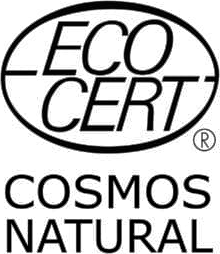
.png)




 (9).png)

Learn
together
